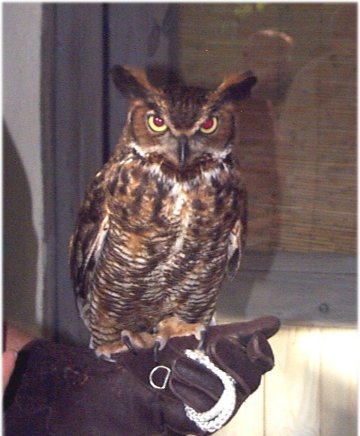| Habitat: deep forest, desert cliffs,
and woodland lots to suburban estates, parks, and cemeteries. They roost
in dense foliage, tree holes, old nest, and cliffs ledges. |
| Diet: distinct preferences for rabbits, rats,
and mice. Other prey: opossums, muskrats, woodchucks, squirrels, gophers,
and meadow mice. Known to kill: porcupines, cats, skunks, and large birds
like ducks, geese, swans, grouse, turkey, and chicken. When prey is limited,
they will take many kinds of hawks, owls, snakes, frogs, lizards, crayfish,
and other kinds of fish and large insects |
